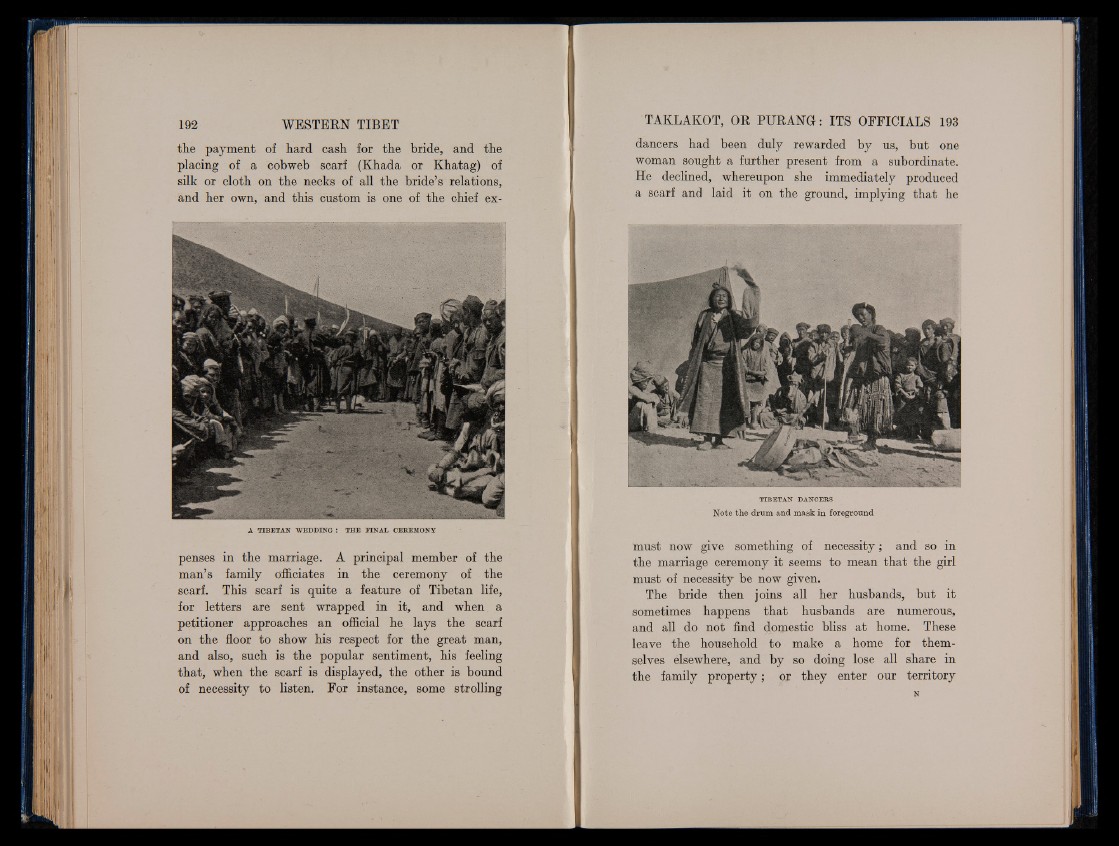
the payment of hard cash for the bride, and the
placing of a cobweb scarf (Khada or Khatag) of
silk or cloth on the necks of all the bride’s relations,
and her own, and this custom is one of the chief exA
TIBETAN WEDDING : THE FINAL CEREMONY
penses in the marriage. A principal member of the
man’s family officiates in the ceremony of the
scarf. This scarf is quite a feature of Tibetan life,
for letters are sent wrapped in it, and when a
petitioner approaches an official he lays the scarf
on the floor to show his respect for the great man,
and also, such is the popular sentiment, his feeling
that, when the scarf is displayed, the other is bound
of necessity to listen. For instance, some strolling
dancers had been duly rewarded by us, but one
woman sought a further present from a subordinate.
He declined, whereupon she immediately produced
a scarf and laid it on the ground, implying that he
TIBETAN DANCERS
Note the drum and mask in foreground
must now give something of necessity; and so in
the marriage ceremony it seems to mean that the girl
must of necessity be now given.
The bride then joins all her husbands, but it
sometimes happens that husbands are numerous,
and all do not find domestic bliss at home. These
leave the household to make a home for themselves
elsewhere, and by so doing lose all share in
the family property; or they enter our territory